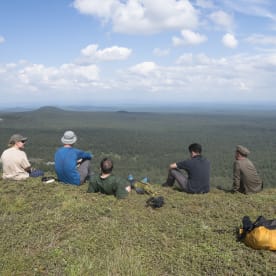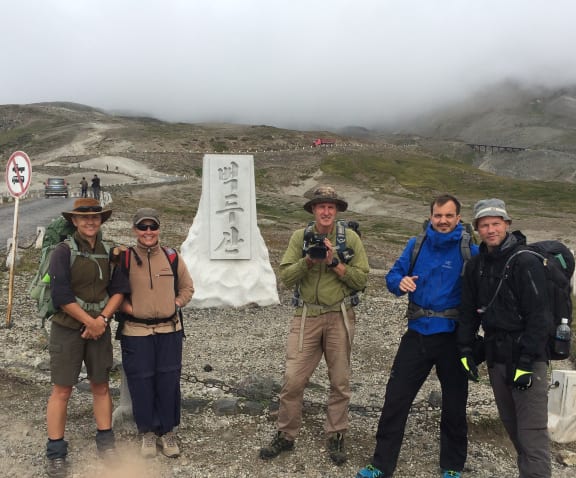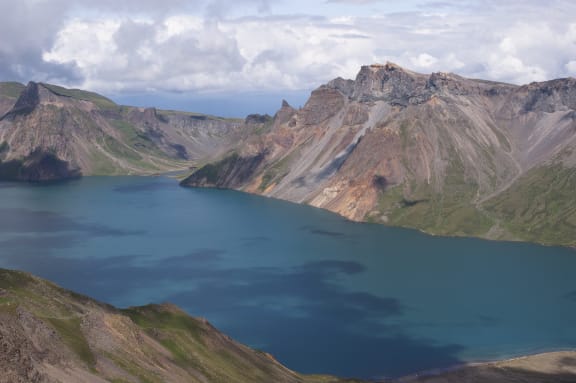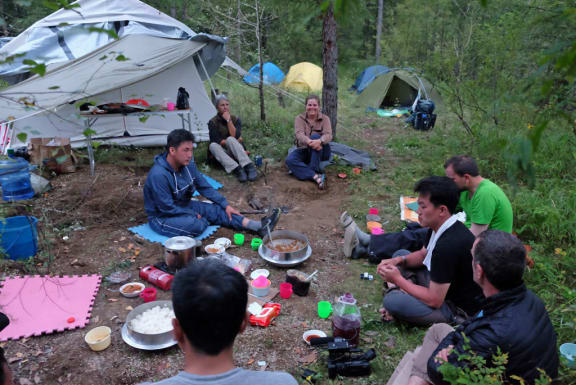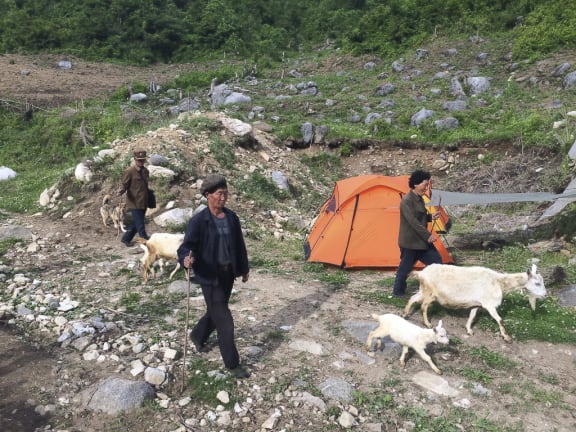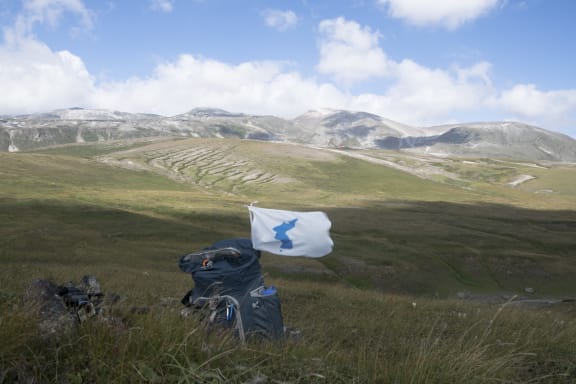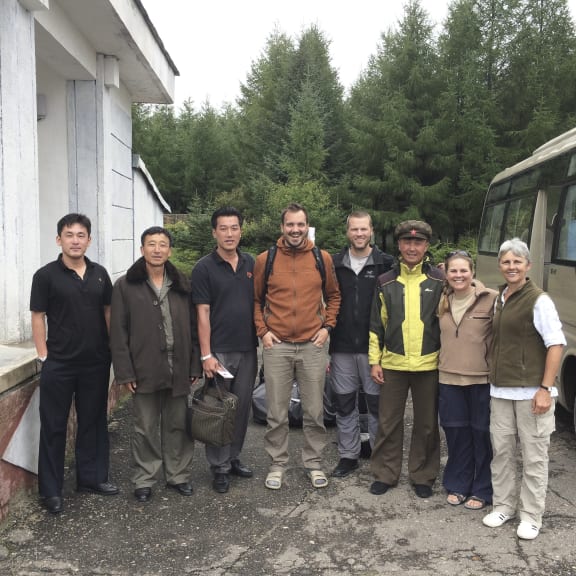Roger Shepherd's first hiking trip to North Korea's pristine Paektu plateau went so well he's planning to do four more next year.
The large plateau – which remains nearly untouched by humanity – lies beneath Northeast Asia's tallest mountain Paektu-san.
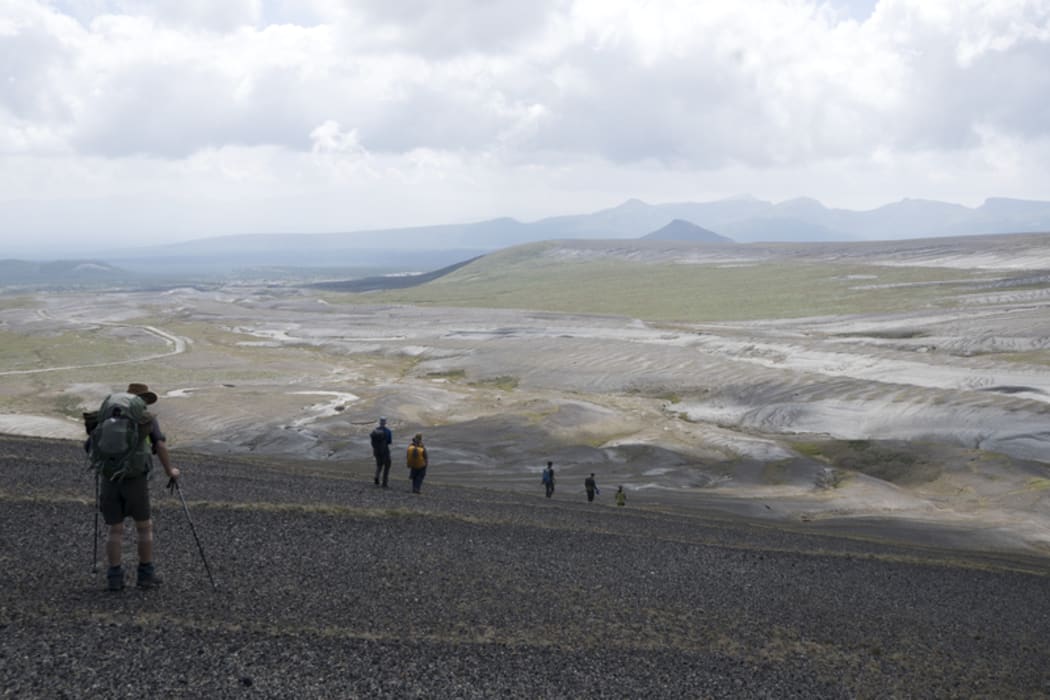
Trekking across the Paektu plateau. Photo: Roger Shepherd / Supplied
Shepherd has spent years tramping in North and South Korea, and recently got permission from North Korean authorities to take some keen tourists to Paektu-san.
He spoke to RNZ before his journey and tells Jesse Mulligan the trip went well.
Listen to Roger Shepherd's first conversation with Jesse Mulligan about hiking in North Korea here.
Shepherd travelled to Paektu-san with a tourist group of two Norwegian men and two Australian women who had never been to North Korea before.
"We visited that peak, walked down to its caldera lake and then out again, camped and then for the next five days we walked .... the big plateau region of this area and we camped at different sites each night."
Paektu-san is Korea’s highest, holiest mountain – about 2700m above sea level.
There are few other peaks nearby and the plateau area around it is beautiful, Shepherd says.
"No one’s ever trekked in that region before. Plenty of visitors go to Paektu-san but no one’s actually accessed the plateau area."
"Most of the mountains here [in the Korean peninsula] are very jagged and steep and quite dramatic and 70 percent of the peninsula is mountains. And then suddenly you’re in this big northern region in North Korea in this completely different terrain, and it’s got a lot of history and it’s very, very untouched.
"It is very stunning. I remember the first time I went there I was pretty blown away by it and looking down into the caldera ... the plateau area reminds me a lot of the central plateau, Tongariro."
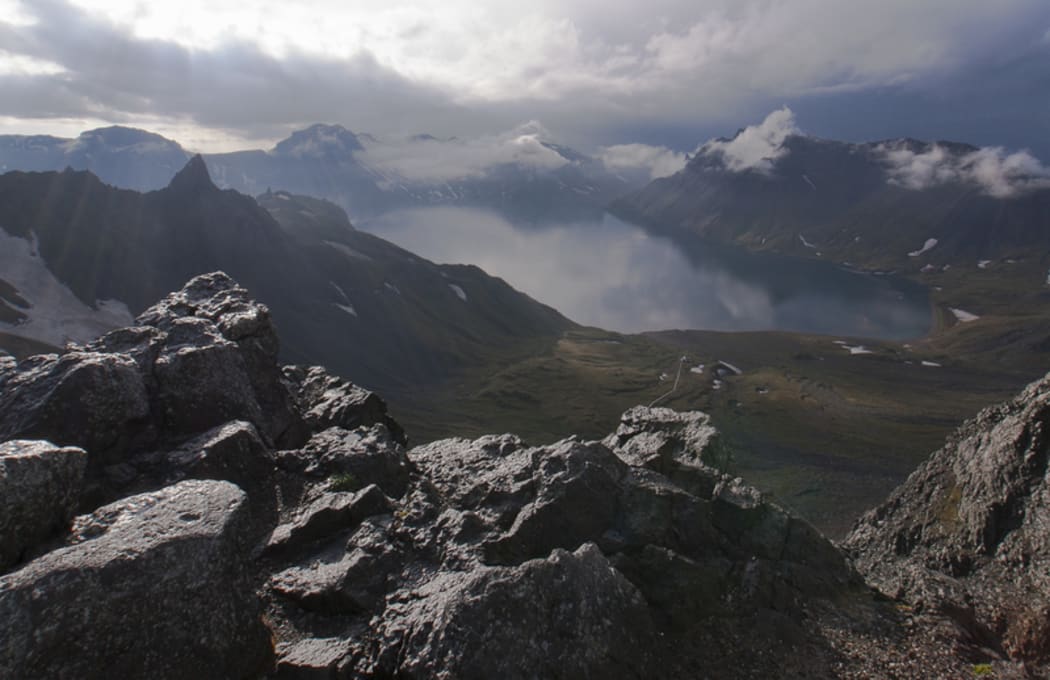
Paektu-san in June. Photo: Roger Shepherd / Supplied
The group visited trails used by local Koreans to visit the historic huts used by anti-Japanese freedom fighters in the early 20th century.
"During the colonial period of Korea, Koreans were based in the Manchuria region and they were launching … communist revolutionary-style anti-Japanese campaigns against them, and they blazed a lot of trails in that area, too.
"A lot of the bivouacs that they slept in or made, which they used as a basis to, I guess meet with local people for the information on the whereabouts of the Japanese, have been kept as historical sites."
"People of North Korea, they visit those sites as part of high-school outdoor education camps and things like that.
"What I did is jumped on that system and used those trails, and then visited many of those ‘secret camps’ ... and then camped nearby those campsites because there was always a water supply or a toilet we could use."
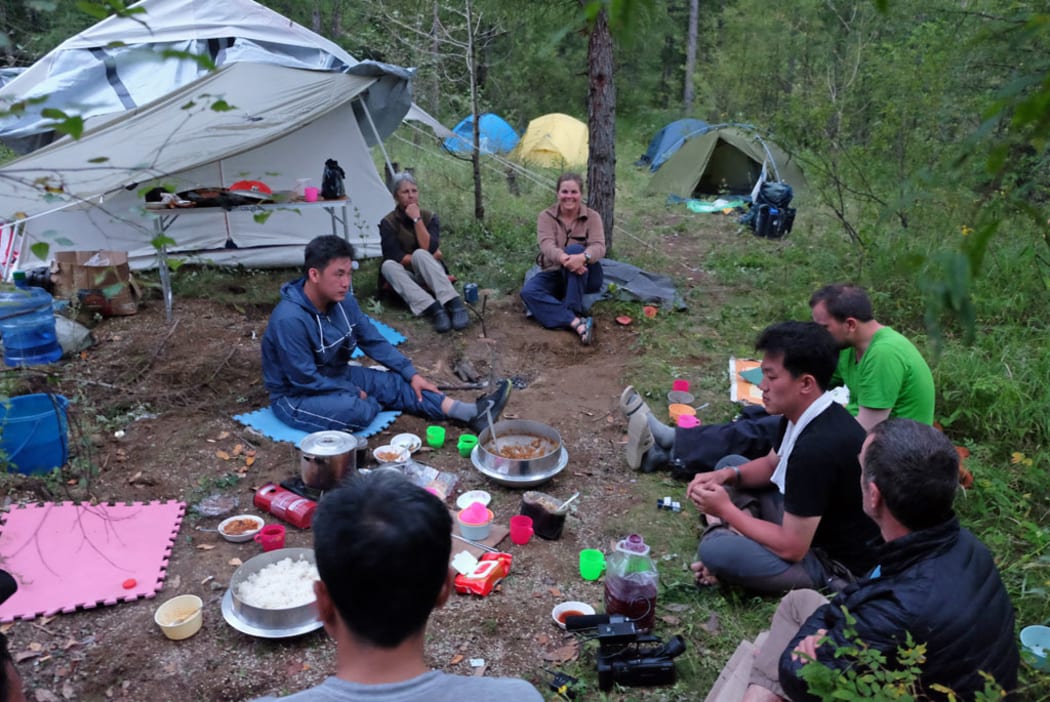
Dinner at a Paektu-san "secret" camp used by Korea's anti-Japanese freedom fighters in the early 20th century. Photo: Roger Shepherd / Supplied
Shepherd says he was able to get a permit to visit Paektu-san because of his relationship with the North Korean authorities.
"I’ve made several visits to North Korea since 2011, probably at least 15, and my theme is always mountains.
"Over the years I’ve built up some trust with the North Korean authorities, and they’ve grown to like my work and understand what I’m doing even though I’m based in the South.
"I guess utilising these secret camps circuits to boost tourism and to introduce foreigners to this area was an idea they approved of."
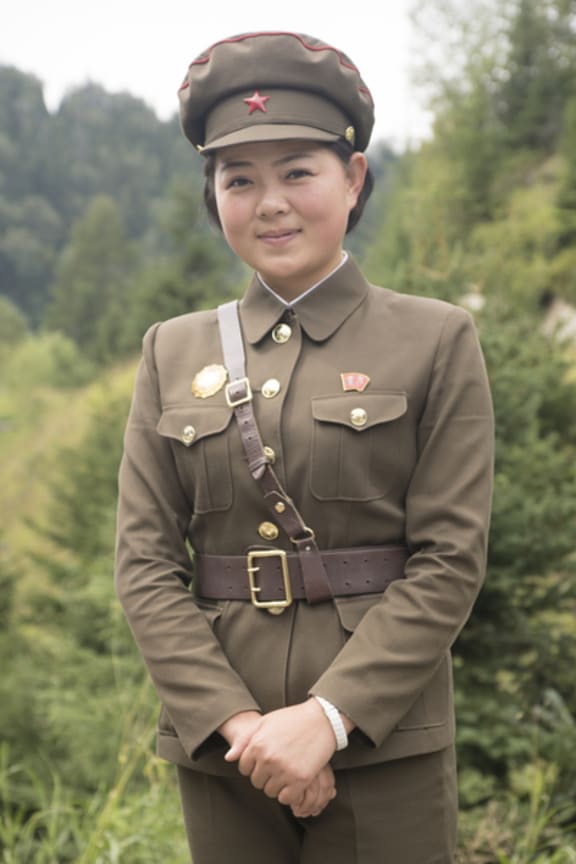
Paektu-san camp guide. Photo: Roger Shepherd / Supplied
He says that he uses the mountain scenery to make a living while also promoting peace between the North and South.
"I’ve been documenting mountains of the Baekdu Daegan, which is a mountain spine of the Korean peninsula, and I’ve been getting rare images of these mountains and then putting them in photo art books and then combining a lot of these images with mountains of the same system in South Korea and then selling the books in South Korea where I'm based.
"Often my theme is about one mountain, one people, and connecting this mountain spine together … with the images that I capture."
Shepherd plans to do a lot more trekking in the area and even build facilities there.
"I would like to hopefully develop maybe trails there that are signposted and build shelters as well out of log-cabin style shelters because it does rain quite a bit there, [let people] pitch tents and have a water supply and somewhere safe to cook without starting a fire.
"I think if we developed trails there that’ll stop people wandering off over all these pristine grasses and wildflowers that need to be protected.
"Next year I’d like to do four more visits there between June and September, one for each month.
"I got a lot of interest, a lot of emails. Unfortunately, Americans still can’t travel to North Korea because they’ve been banned by their government.
"The visits are about 12 nights, 13 days, because we do the six days of trekking and then we do like about four days in Pyongyang – so we do a lot of sightseeing out in Pyongyang, we visit the DMZ down at Panmunjon.
"I think once there’s a bit more of a broader understanding of why North Korea is what it is, and what it means, and where they want to go then we as westerners might be able to understand them a bit better in the future.
"Mountains, tourism and local exchange, sports exchanges can help these things happen."

